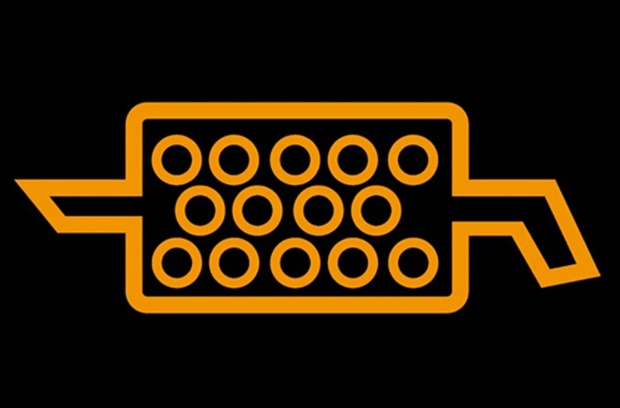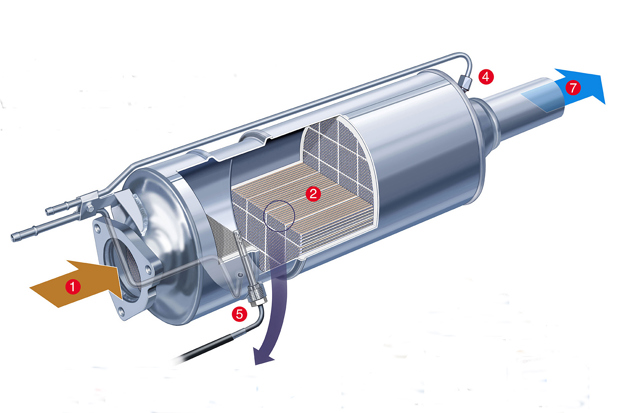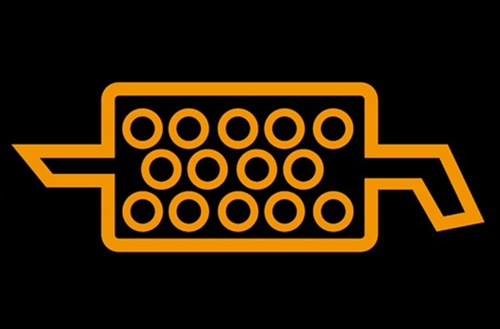Diesel Particulate Filters: DPFs explained
If you own a diesel car, chances are it has a diesel particulate filter - or DPF for short. Here's how to avoid DPF problems.

- Find out how diesel particulate filters work
- How to avoid DPF problems
- How much is it to clean a DPF?
A diesel particulate filter - or DPF for short - is part of a diesel car's exhaust system that's designed to filter out harmful soot. However, a DPF needs maintaining otherwise it can go wrong, leaving you with a costly repair.
Diesel engines produce a lot of soot when they burn fuel. This soot is what's known as particulate matter. It’s a very fine substance that can cause serious health problems, namely breathing problems.
The job of the DPF is to filter and store this soot in order to reduce emissions from diesel cars. But because they have a limited capacity, this soot has to be regularly burned off to regenerate the DPF.
If the soot blocks the filter, this can stop the engine from running and leave you with a hefty repair bill for either cleaning, or worst case scenario, replacing, the DPF. It's no surprise we get some many questions from readers about DPFs.
Does my car have a DPF?
If it was built after 2009 then it will do. All diesel cars built since September 2009 have to be fitted with a DPF in the exhaust to stop this soot passing into the atmosphere. It's part of the Euro 5 standard for diesels but be aware that some cars built before this date also come with DPFs.
How to avoid DPF problems
You need to ensure your DPF regenerates in order to stop it clogging up with soot. That means driving it a sustained speed for 30 minutes or more. How often you should do this depends on the kind of driving you're doing but if you sit in a lot of traffic, a good motorway or dual-carriageway run at 60mph once a week will burn it off.
Active regeneration will be initiated every 300 miles or so depending on how you use your car and will take around 5 to 10 minutes to complete.
What does a DPF actually do?
The job of the DPF is to filter and store soot from diesel engines. So what does it do with all that harmful soot? The DPF burns it off the filter at high temperatures, leaving a residue of ash behind. This is what is known as regeneration.
Regeneration burns off the excess soot in the filter, reducing harmful exhaust emissions and helps to prevent the black plumes of smoke you sometimes see from older diesel vehicles when they accelerate. There are two types of regeneration - active and passive.
Passive regeneration
This takes place while driving, using the heat of the exhaust. Doing this on a regular basis is enough to burn off the soot and turn it to ash. However, it requires the temperatures created when a car is running at speed for a sustained period of time.
To make sure that the regeneration takes place, it's advised that diesels are driven for a good 30 to 45 minutes on a motorway or A-road at a constant speed.
However, passive generation isn't always possible, for instance if you sit in lots of traffic. So car manufacturers have designed active regeneration.
Active regeneration
Active regeneration works by injecting extra fuel in order to increase the the temperature of the exhaust gases and burn off the soot in the DPF. It still requires a journey of a reasonable length though - around 10 minutes at 40mph or more is the suggested time.

How do I know if my DPF is regenerating?
When the DPF is regenerating you may notice the the cooling fans running and higher fuel consumption. The tell tale sign for many is a hot and unusual smell from under the car. The engine idle speed can also be higher than usual. If your car has start-stop, you'll likely find that it's deactivated during regeneration.
How do I know if my DPF is blocked?
DPFs get clogged with soot if regeneration doesn't happen often enough. If that's the case you'll get a DPF dash warning light come up. It looks like this symbol:

This usually happens to drivers of older diesels that do lots of short trips, or lots of start/stop driving, because the vehicle doesn't get up to a high enough temperature to achieve passive regeneration. Cars with active regeneration should see fewer DPF problems.
How long can you drive with DPF light on?
Not very long is the answer. When the DPF light comes on your dash, it's indicating that your DPF filter is nearing its capacity and requires prompt action.
Though your vehicle won't immediately stop once the light appears, prolonged driving without addressing the issue can result in significant problems such as poor fuel economy, decreased performance and in extreme cases, engine damage.
If you leave it, the car is likely to go into limp mode, restricting power and speed.
What happens if you ignore a DPF warning light?
If your DPF becomes clogged with soot, you will get a warning light on your dash. Driving at a sustained speed in order to burn the excess soot off is often enough to clean the DPF and solve the problem without needing to visit a garage.
But if you ignore this warning light, the car will eventually go into limp mode to prevent further engine damage.
If left any longer, the DPF won’t be able to regenerate itself and will need to be cleaned or even replaced.
You should also ensure you use the right engine oil. Certain oils contain additives that can actually block DPFs. Using low-quality fuel and running the car frequently on a low fuel level can also harm a DPF because the car may avoid regeneration in order to save fuel.
Is it illegal to remove a DPF?
Yes. It is illegal to drive a car that was designed to have a DPF without one fitted. This is because should you remove it, your car no longer meets its emissions standards. Owners face fines of up to £1000 for cars and £2500 for vans if caught. Removing a DPF can also invalidate your car insurance policy.
From February 2014, checking the presence of a DPF became part of the MoT test. All cars that are designed to have a DPF now get inspected for one. If it’s missing it will mean an immediate failure.
How much does it cost to clean a DPF?
Some garages can clean a DPF using forced regeneration. Costs vary but as a guide, Halfords offers a DPF deep clean for £85. It involves special cleaning agent being injected into the filter to remove the soot blockage.
Where can I get my DPF cleaned?
If your DPF light comes on and driving it at speed doesn't solve the problem, it may need cleaning. There are plenty of places you can get this done without it breaking the bank. Here are the companies to look at if you need your DPF cleaned.
| Product |
Price |
Details |
|
Maintenance Clean |
£35 |
Designed to be used every 6 months |
|
£85 |
For heavy soot build up |
|
|
Complete Clean |
POA |
Removal of DPF and overnight soak |
| Product |
Price |
Details |
|
Preventative Maintenance Service |
£110 |
Cars smaller than 2.0-litre |
|
£130 |
Cars above 2.0-litre engine size |
| Product |
Price |
Details |
|
DPF Clean |
£265 |
Diagnostics charged at £84 an hour |
| Product |
Price |
Details |
|
DPF Clean |
£199 |
Includes a diagnostics check |
| Product |
Price |
Details |
|
DPF Clean |
£199 |
Mobile service at no extra charge |
How much does a replacement DPF cost?
If you don't maintain the DPF properly, excess soot can damaged the DPF beyond repair. If this is the case, it has to be replaced - and they're very expensive. A new DPF can cost anywhere from £1000 up to £3500. There are DPF suppliers that charge less, but make sure they have the correct Type Approval or they may not work properly and end up costing you more in repairs.
How long should a DPF last?
A DPF can last up to around 100,000 miles if maintained properly. After the car has exceeded that mileage, you could be looking at paying a large amount of money for a replacement - so always properly check MoT and service records when buying a used car. Otherwise, you could end up forking out for unexpected repairs on high mileage diesels.
Is a DPF covered under warranty?
Most manufacturer's warranties don't cover the cost of DPF replacement if the fault is deemed to have been caused by the owner's driving style. Given that a replacement DPF costs around £1000 it's not hard to see why manufacturer's aren't keen to cover them.
There are lots of factors in the lifespan of a DPF such as the annual mileage of the car, the oil used and what manufacturer's would call 'the driving style' of the owner. We are yet to hear of anyone being able to get a DPF replaced under warranty.



